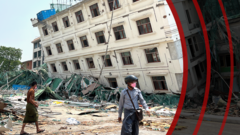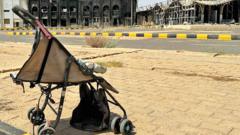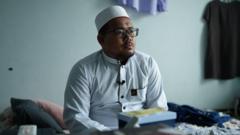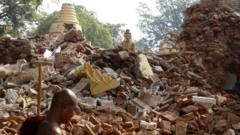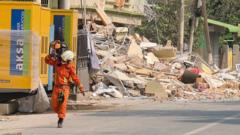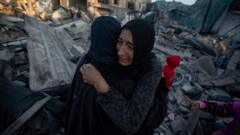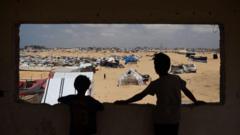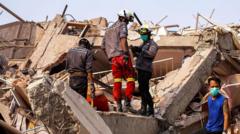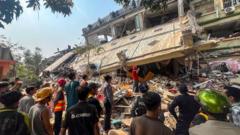After months of violent conflict, the Sudanese army has regained control of Khartoum, leaving behind a city in ruins while residents grapple with the psychological scars of war and a quest for a hopeful future. The path ahead remains uncertain as the community yearns for reconstruction and stability.**
After the Smoke Clears: A New Era for Khartoum or Just the Calm Before the Next Storm?**
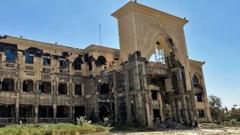
After the Smoke Clears: A New Era for Khartoum or Just the Calm Before the Next Storm?**
As Sudan's army claims victory in Khartoum, the capital emerges from intense combat, revealing devastation and a fragile sense of hope among its residents.**
The battered heart of Khartoum has transformed into a ghost town following the recent military victory of Sudan's army over the paramilitary Rapid Support Forces (RSF). Local journalists and observers describe an eerie quietness engulfing the capital, as visible signs of the tumultuous six-month offensive linger everywhere. Roads in the once-thriving city are now littered with debris and corpses, emblematic of the severe urban combat that took place.
Immediately after regaining control, we visited landmark locations, including the presidential palace, which served as a base for the RSF during the conflict. Inside, debris was strewn everywhere: broken furniture, shattered ceilings, and signs of looting were stark reminders of the war's toll. One soldier expressed exhilaration at stepping into the presidential palace for the first time, symbolizing both a personal and collective yearning for freedom.
While jubilant soldiers celebrated the Islamic Eid holiday as newfound heroes, the residents of Khartoum faced overwhelming destruction. Key infrastructures, including government buildings and the international airport, have been left in ruins. The scale of devastation is shocking, with many areas showing clear signs of violent confrontation, such as unexploded ordnance littering the streets. The airport, crucial for commerce and communication, now resembles a graveyard for destroyed aircraft.
Despite the catastrophic damage, a sense of cautious optimism prevails among certain segments of the population. Many are celebrating Eid for the first time in two years, signifying a shift from despair towards a newfound hope for rebuilding life. In neighborhoods like al-Jeraif West, celebrations thrived, with locals expressing profound relief and festivity, focusing on the symbolism of freedom rather than basic survival.
Community leaders and activists are echoing the complexity of this newfound sense of freedom. While some residents feel liberated from the immediate threat posed by the RSF, there are significant concerns over the long-term repercussions. The psychological scars, especially among children who witnessed trauma during the violence, reveal the war’s lingering effects. Activists voice trepidation about the future of civil rights and freedoms, questioning whether the gains of the past few years can withstand the upheaval.
The resurgence of the army in Khartoum raises critical questions. Will the government successfully guide the country towards reconstruction, attracting foreign investment needed for recovery? Or will deep-rooted divisions re-emerge, setting the stage for further conflict? The city is still healing, grappling with traumas while striving for societal cohesion.
As residents cling to hopes for restoration and sustainability, they also remain acutely aware of the ongoing crisis in areas like Darfur, where humanitarian situations have worsened. Many citizens pray for those still caught in the crossfire of conflict. For now, the mood in Khartoum is a juxtaposition of celebration and trepidation, a delicate balance of hope against a backdrop of uncertainty. The future of Sudan remains a pivotal question, as the process of healing begins amidst the ruins.

